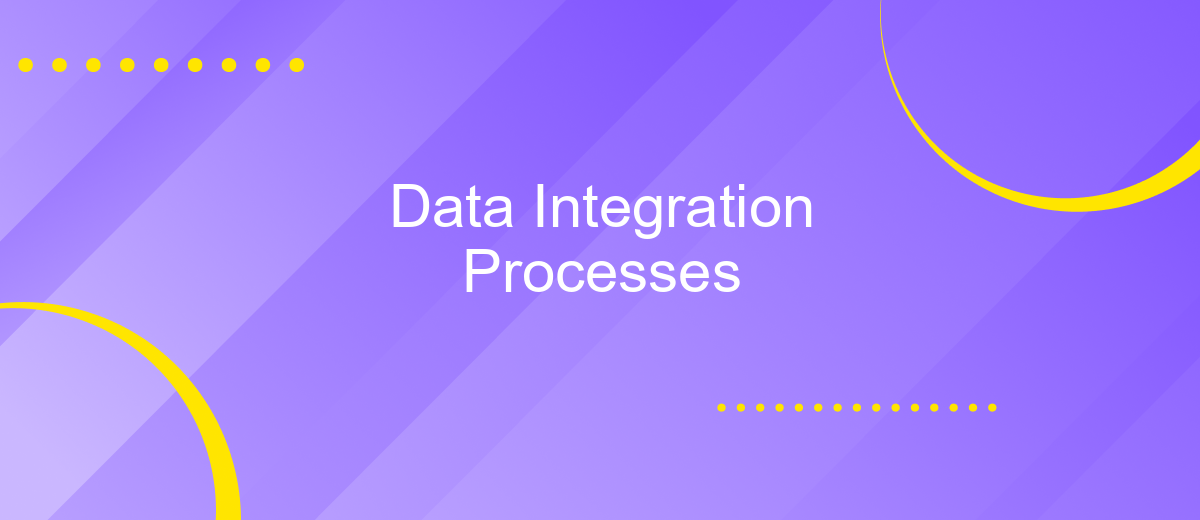Data Integration Processes
Data integration processes are essential for modern businesses, enabling the seamless combination of data from various sources into a unified view. This integration facilitates better decision-making, enhances operational efficiency, and supports comprehensive analytics. In this article, we will explore the key methods, challenges, and best practices for effectively integrating data to maximize its value and utility.
Introduction
Data integration processes are essential for businesses aiming to consolidate information from various sources into a cohesive, unified view. These processes enable organizations to ensure data consistency, improve decision-making, and enhance operational efficiency. Effective data integration can be complex, involving multiple steps and technologies to ensure seamless data flow across systems.
- Data Extraction: Collecting data from various sources.
- Data Transformation: Converting data into a consistent format.
- Data Loading: Importing data into a target system.
- Data Quality Management: Ensuring data accuracy and completeness.
- Data Monitoring: Continuously tracking data flow and performance.
One of the tools that can simplify the data integration process is ApiX-Drive. This service allows businesses to automate data transfer between applications without needing extensive coding knowledge. By leveraging ApiX-Drive, companies can streamline their data workflows, reduce manual errors, and ensure timely data updates across systems. As a result, businesses can focus more on strategic initiatives rather than getting bogged down by technical complexities.
Data Integration Challenges

Data integration processes often face numerous challenges that can impede the seamless merging of data from diverse sources. One of the primary difficulties is data inconsistency, where data from different systems may have varying formats, structures, or levels of accuracy. This can lead to significant discrepancies and errors when attempting to consolidate the data. Additionally, data integration requires significant time and resources for mapping and transforming data to ensure compatibility across systems, which can be particularly challenging for organizations with limited IT capabilities.
Another major challenge is the management of data security and privacy, as integrating data from multiple sources can increase the risk of data breaches. Ensuring compliance with data protection regulations such as GDPR and HIPAA adds another layer of complexity. Tools like ApiX-Drive can help mitigate some of these challenges by providing automated integration solutions that simplify the process of connecting various data sources. ApiX-Drive offers user-friendly interfaces and robust security measures, making it easier for organizations to manage data integration without compromising on data integrity or security.
Data Integration Solutions

Data integration solutions are essential for businesses that need to consolidate data from various sources into a unified view. Effective data integration ensures that all data is accurate, up-to-date, and accessible, thereby enabling better decision-making and streamlined operations.
- ETL Tools: Extract, Transform, Load (ETL) tools are used to extract data from different sources, transform it into a usable format, and load it into a data warehouse or other storage systems.
- Data Integration Platforms: Platforms like ApiX-Drive provide a user-friendly interface for setting up integrations between different applications and services without the need for complex coding.
- API Management: APIs allow for seamless data exchange between systems. Effective API management ensures that these integrations are secure, scalable, and easy to maintain.
Choosing the right data integration solution depends on the specific needs of your business. Tools like ApiX-Drive can simplify the integration process by offering pre-built connectors and an intuitive interface, making it easier to manage data flows between various systems. This ensures that your data remains consistent and readily available for analysis.
Benefits of Data Integration

Data integration is a critical process for organizations aiming to streamline operations and make informed decisions. By consolidating data from various sources into a single, unified view, businesses can achieve greater accuracy and consistency in their data analysis. This not only enhances decision-making but also improves overall operational efficiency.
One of the significant advantages of data integration is the reduction of data silos. When data from different departments and systems is integrated, it breaks down barriers, allowing for seamless communication and collaboration across the organization. This leads to a more holistic understanding of business processes and customer behavior.
- Improved data quality and consistency
- Enhanced decision-making capabilities
- Increased operational efficiency
- Reduced data redundancy and storage costs
- Better customer insights and personalization
Services like ApiX-Drive facilitate the data integration process by providing easy-to-use tools for connecting various applications and systems. With ApiX-Drive, businesses can automate data transfer and synchronization, ensuring that their data is always up-to-date and accurate. This not only saves time but also minimizes the risk of errors associated with manual data handling.


Best Practices for Data Integration
Effective data integration requires a strategic approach to ensure accuracy, consistency, and efficiency. Start by defining clear objectives and requirements for your data integration process. This involves understanding the data sources, the nature of the data, and the desired outcomes. Utilizing a robust integration platform like ApiX-Drive can streamline this process by offering pre-built connectors and automation tools that simplify the integration of various data sources.
Data quality is paramount; therefore, implement data validation and cleansing procedures to maintain high standards. Regularly monitor and audit your data integration workflows to identify and rectify any issues promptly. Additionally, ensure that your integration solution supports scalability to handle increasing data volumes and complexity. ApiX-Drive, for instance, provides scalable solutions that can grow with your business needs, ensuring seamless data flow and integration across multiple platforms.
FAQ
What is data integration?
Why is data integration important for businesses?
What are the common challenges in data integration?
How can businesses automate data integration processes?
What are some best practices for successful data integration?
Strive to take your business to the next level, achieve your goals faster and more efficiently? Apix-Drive is your reliable assistant for these tasks. An online service and application connector will help you automate key business processes and get rid of the routine. You and your employees will free up time for important core tasks. Try Apix-Drive features for free to see the effectiveness of the online connector for yourself.

